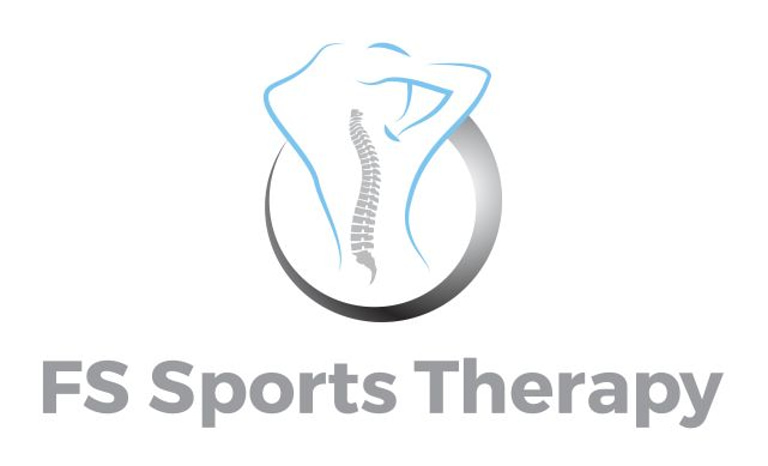Sports Therapy For Everyone
When we hear the term sports therapy, most of us imaging professional athletes recovering from injuries. However the benefits of sports therapy extend way beyond this and apply to all individuals no matter how active you are. Read this blog to discover more.
10/7/20245 min read


When people hear the term “sports therapy,” they often assume it’s exclusively for athletes—those who train rigorously, compete professionally, or engage in physically demanding activities regularly. However, sports therapy extends far beyond the professional athlete’s domain. This specialized branch of therapy, originally designed to optimize performance and recovery in athletes, offers significant benefits to anyone—whether or not they’re actively involved in sports.
In fact, sports therapy can be a crucial resource for people from all walks of life. If you lead a sedentary lifestyle, have a physically demanding job, or even experience everyday aches and pains, sports therapy can help. Here’s why sports therapy is valuable for the general population and how it can improve overall well-being.
What is Sports Therapy?
Sports therapy is a field that focuses on injury prevention, rehabilitation, and performance enhancement through a variety of techniques. It combines elements of physical therapy, exercise science, and massage therapy to treat musculoskeletal injuries, restore movement, and improve the body’s functionality. While its origins are rooted in helping athletes recover from injuries and improve their athletic performance, its benefits can easily translate to the general population.
A sports therapist is trained to assess, treat, and rehabilitate physical issues that affect the body’s movement, ensuring that muscles, joints, and ligaments are functioning at their best. They also provide advice on injury prevention and can tailor fitness programs that improve posture, strength, and flexibility.
1. Injury Prevention and Rehabilitation
One of the primary goals of sports therapy is to prevent injuries. But injury prevention isn’t just relevant for athletes. Everyday activities like walking, lifting objects, sitting for long hours, or even sleeping in the wrong position can lead to injuries or strain over time. Whether it’s a backache from sitting at a desk, a pulled muscle from household chores, or a sprained ankle from an unexpected fall, sports therapy can play a critical role in recovery.
A sports therapist helps identify the root cause of pain and discomfort and creates a tailored plan to rehabilitate the affected area. This might include exercises to strengthen weak muscles, improve flexibility, and reduce pain, as well as techniques such as soft tissue mobilization or joint manipulation.
For non-athletes, sports therapy can also help in speeding up recovery from common injuries like strains, sprains, or repetitive strain injuries (RSIs). Rather than relying solely on medication or rest, sports therapy provides a proactive approach to healing, ensuring a quicker, more complete recovery.
2. Posture Correction and Musculoskeletal Alignment
In today's world, many people spend a significant amount of time sitting at desks, working on computers, or engaging in other repetitive tasks. Poor posture and prolonged sitting can lead to musculoskeletal imbalances, contributing to back pain, neck pain, and tightness in muscles. Over time, these issues can become chronic, affecting your quality of life.
Sports therapy offers techniques to correct posture and restore musculoskeletal alignment. By identifying postural imbalances, therapists can recommend corrective exercises and stretches to improve alignment and reduce strain on the body. In addition, manual therapy techniques like deep tissue massage and joint mobilization can help alleviate tension in tight muscles, relieving pain and discomfort caused by bad posture.
3. Enhanced Mobility and Flexibility
Another significant benefit of sports therapy is improved flexibility and mobility, which are crucial for maintaining an active and healthy lifestyle. While flexibility and mobility are often associated with athletes, they are equally important for non-athletes. Simple daily activities such as bending, reaching, or even walking require good mobility and flexibility.
As we age, our muscles tend to become tighter, and our range of motion decreases. This can lead to stiffness, pain, and an increased risk of injury. Sports therapists use stretching techniques, mobility exercises, and massage therapy to improve joint and muscle flexibility, ensuring that the body moves freely and without pain. These interventions can help people maintain independence, avoid injuries, and stay active as they age.
4. Stress Relief and Mental Well-Being
It’s no secret that physical health and mental health are deeply interconnected. Regular physical activity and therapeutic interventions have been shown to reduce stress, anxiety, and depression. For individuals leading busy lives, managing stress is essential for overall well-being. Sports therapy offers a holistic approach to stress relief by addressing both physical and mental tension.
Massage therapy, which is often a key component of sports therapy, is particularly effective for promoting relaxation and reducing stress. By releasing tight muscles and alleviating physical discomfort, it helps the body relax, which in turn has a calming effect on the mind. In addition, physical exercises prescribed by sports therapists can improve circulation and boost endorphin levels, providing a natural mood lift.
Sports therapy also encourages body awareness, helping individuals recognize how stress or emotional tension may manifest physically, whether through headaches, muscle tightness, or fatigue. This awareness can be a vital step toward adopting healthier coping mechanisms for stress.
5. Improved Strength and Conditioning
For non-athletes, maintaining physical strength and endurance is important for performing daily tasks with ease, such as lifting groceries, playing with children, or climbing stairs. However, many people experience muscle weakness or imbalances due to a lack of regular physical activity, leading to a higher risk of injury or discomfort.
Sports therapy can be a valuable tool for improving strength and conditioning. Sports therapists design personalized exercise programs that target specific areas of weakness, helping to build overall strength and stability. These programs can include bodyweight exercises, resistance training, and functional movements that simulate daily activities, making it easier for individuals to stay active and perform tasks without pain or fatigue.
This is particularly important for older adults, who often experience a natural decline in muscle mass and strength as they age. Sports therapy can help combat this decline by encouraging safe and effective exercise routines that promote strength, balance, and coordination.
6. Personalized Approach to Fitness
Unlike general fitness programs, sports therapy offers a highly personalized approach tailored to an individual’s unique needs, whether they’re recovering from an injury or simply looking to improve their fitness. Sports therapists assess each person’s body mechanics, movement patterns, and fitness level, creating customized exercise plans that suit their goals and abilities.
This personalized approach is particularly useful for people with specific physical limitations, chronic pain, or medical conditions. Whether you’re looking to improve your strength, increase your flexibility, or recover from a long-term injury, sports therapy provides a targeted, structured program that adapts to your body’s needs.
7. Chronic Pain Management
For many individuals, chronic pain is a daily reality. Conditions like arthritis, fibromyalgia, or chronic lower back pain can severely limit mobility and decrease quality of life. Sports therapy offers an effective way to manage chronic pain by addressing its underlying causes, such as muscle tension, inflammation, or joint stiffness.
Therapists use a variety of techniques to alleviate pain, including manual therapy, therapeutic exercises, and modalities like ultrasound or electrical stimulation. These treatments can reduce inflammation, improve circulation, and promote tissue healing, providing long-term relief from chronic pain conditions.
Conclusion
Sports therapy is not just for athletes; it is a valuable tool for anyone looking to improve their physical health, recover from injuries, or manage chronic pain. Its holistic approach, combining physical therapy, massage, and exercise science, offers benefits that extend far beyond the sports world. Whether you’re dealing with everyday aches and pains, recovering from an injury, or simply looking to enhance your overall well-being, sports therapy can help you move better, feel better, and live a more active, pain-free life.
Wellness
Expert massage treatments for aches, pains, and Injury recovery.
Relief
info@fssportstherapy.co.uk
07754 286 893
© 2024. All rights reserved.
Hours
Mon - 18:00 - 21:30
Tues - 09:30 - 21:30
Weds - 19:30 - 22:00
Sat - 08:00 - 12:00
